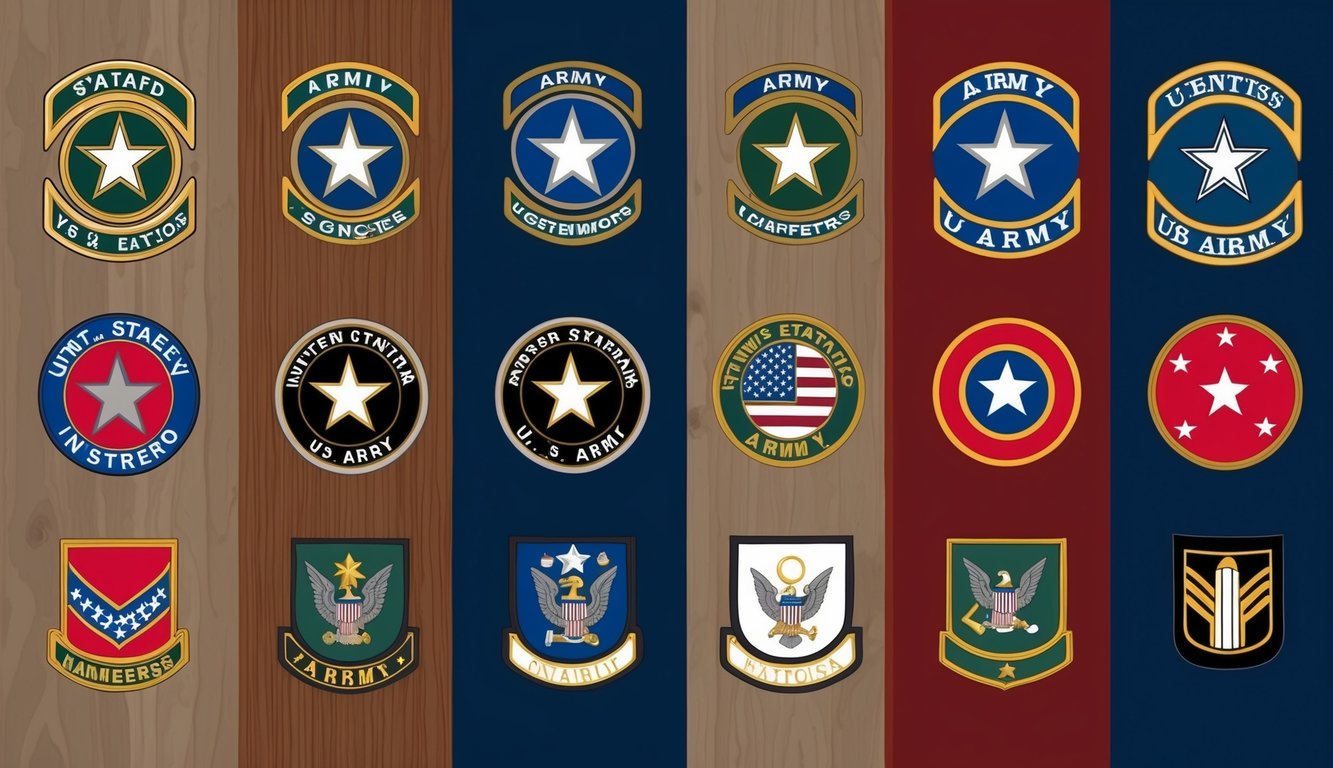The U.S. Army features a broad spectrum of ranks and positions, offering opportunities for personal development and career progression. Grasping the Army’s rank hierarchy and job specializations is essential for anyone contemplating a military career or seeking to deepen their understanding of this critical institution. From enlisted members to high-level officers, each role is vital in preserving national safety and upholding the Constitution.
Army ranks fall into three principal categories: enlisted personnel, warrant officers, and commissioned officers.
Each category possesses its own ranking system and responsibilities, highlighting the diverse skills and expertise required to operate a multifaceted military organization.
Advancing through the ranks leads to increased leadership responsibilities and greater authority within your unit.
Key Takeaways
- Army ranks are categorized into enlisted, warrant officer, and commissioned officer classifications
- Every rank entails specific responsibilities and leadership potential
- The Army provides a vast array of job specializations to accommodate various skills and interests
Understanding the Army Structure
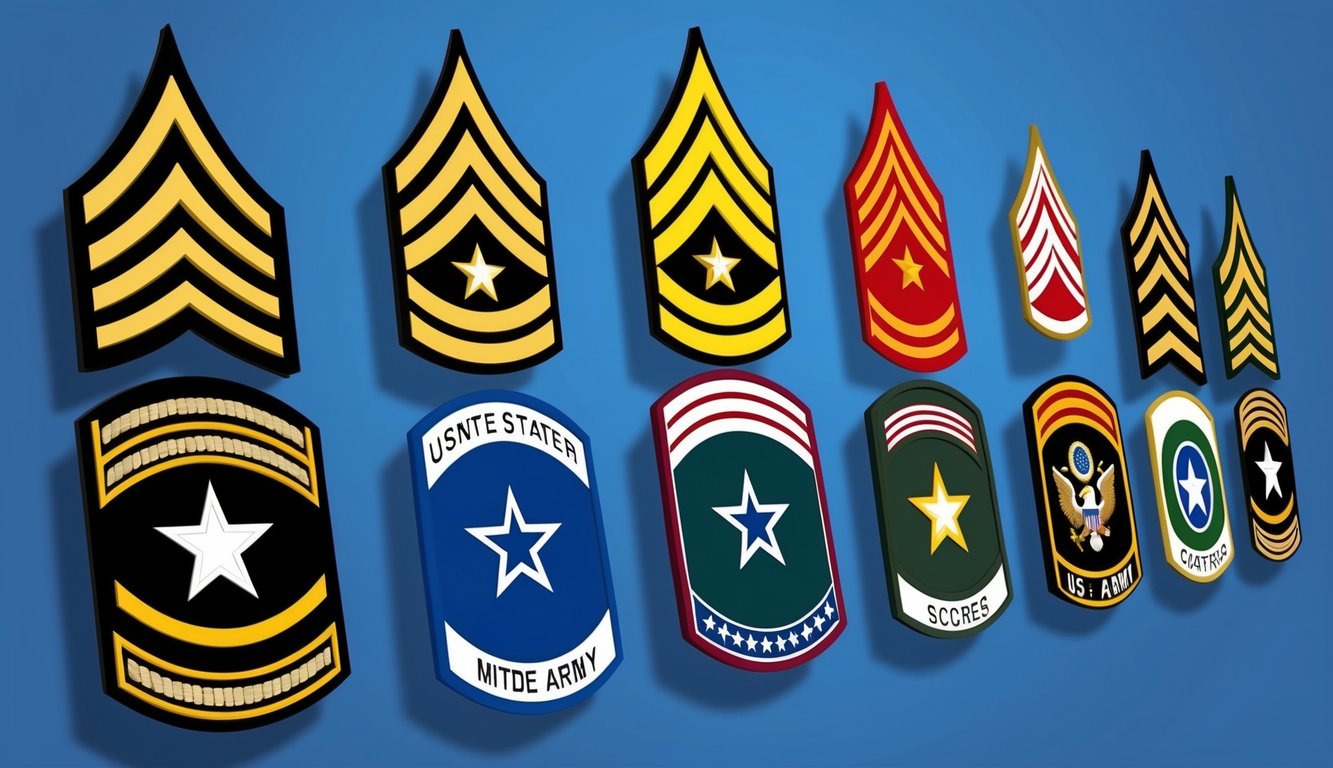
The U.S. Army has an intricate organizational framework intended to enhance efficiency and effectiveness.
This structure comprises various components that collaboratively fulfill the Army’s objectives.
Organizational Structure
The Army’s organization is founded on a hierarchical model.
At the highest level are divisions, which are made up of brigades.
Brigades consist of battalions, which are divided into companies.
Each tier has its own leadership and defined responsibilities.
Companies usually comprise 100-200 soldiers, while battalions can range from 300 to 1,000.
Brigades typically encompass 3,000 to 5,000 soldiers.
Within these units, various specialties and roles exist, promoting clear chains of command and efficient operations in diverse environments.
Army Components: Regular Army, Army Reserve, and National Guard
The U.S. Army is divided into three principal components: the Regular Army, Army Reserve, and National Guard.
The Regular Army, or active duty, represents the full-time component.
Soldiers here serve around the clock and are always on call for deployment.
The Army Reserve operates as a part-time unit.
These soldiers undergo regular training while maintaining civilian jobs and can be activated to support active duty forces as necessary.
The National Guard fulfills a dual mission.
It operates as both a state and federal entity, often responding to natural disasters domestically or undertaking deployments abroad.
Each component is integral to the Army’s overall mission and readiness.
Breaking Down Army Ranks: Enlisted
Enlisted soldiers are the backbone of the U.S. Army, advancing through various ranks as they accumulate experience and undertake additional responsibilities.
These ranks are categorized into three main tiers, each with unique roles and levels of authority.
Junior Enlisted Ranks
New recruits begin at the bottom of the enlisted hierarchy.
The starting rank is Private (PV1), which carries no insignia.
Within a few months, you will likely progress to Private Second Class (PV2), marked by a single chevron.
The subsequent rank is Private First Class (PFC), identified by a single chevron with a rocker.
At this level, you’ll receive more responsibilities and a slight pay increase.
The last rank in the junior enlisted category is either Specialist (SPC) or Corporal (CPL).
Specialists concentrate on technical skills, while Corporals assume leadership roles within teams.
Both hold the same insignia but have different functions.
Noncommissioned Officers (NCOs)
NCOs serve as the frontline leaders in the Army.
The rank of Sergeant (SGT) is the first NCO designation, denoted by three chevrons.
In this role, you’ll lead small teams and mentor junior soldiers.
Next up is Staff Sergeant (SSG), bearing three chevrons along with a rocker.
As an SSG, your responsibilities expand to leading larger teams and managing more administrative tasks.
Sergeant First Class (SFC) is the highest junior NCO rank, characterized by three chevrons and two rockers, allowing you to serve as a platoon sergeant or assume other senior responsibilities.
Senior Noncommissioned Officers (SNCOs)
SNCOs represent the most seasoned enlisted personnel.
Master Sergeant (MSG) and First Sergeant (1SG) both hold the E-8 pay grade.
MSGs are technical specialists, while 1SGs lead at the company level.
Sergeant Major (SGM) and Command Sergeant Major (CSM) are ranked E-9.
SGMs serve as staff advisors, while CSMs are the primary enlisted leaders for substantial units.
The highest enlisted position is the Sergeant Major of the Army (SMA), of which there is only one at any time, functioning as the senior enlisted advisor to the Army Chief of Staff.
Exploring Army Ranks: Officers
Officers in the U.S. Army constitute the core leadership framework, progressing through ranks that indicate growing levels of responsibility and authority.
These commissioned leaders are essential in planning operations, managing resources, and directing enlisted personnel.
Company Grade Officers
As a freshly commissioned officer, you’ll commence your career as a Second Lieutenant (O-1).
This entry-level rank involves leading platoons and grasping the essentials of Army leadership.
You’ll quickly advance to First Lieutenant (O-2), taking on greater responsibilities within your unit.
Captains (O-3) command companies comprising 100-200 soldiers, entrusted with substantial leadership responsibilities and resource management.
This rank is often regarded as the backbone of the officer corps.
Company grade officers are generally younger and more involved in the day-to-day operations of soldiers.
Your role will be hands-on, significantly impacting troop morale and unit effectiveness.
Field Grade Officers
As a Major (O-4), you transition to higher-level planning and staff roles, potentially serving as a battalion executive officer or in various staff capacities at the brigade level or higher.
Lieutenant Colonels (O-5) frequently command battalions comprising 300-1,000 soldiers, taking responsibility for multiple companies and influencing broader operational strategies.
Colonels (O-6) serve as senior field grade officers typically commanding brigades or holding high-level staff roles.
Your strategic insight and leadership will shape entire units and influence policy across the Army.
General Officers
Brigadier Generals (O-7) represent the initial tier of general officers, likely overseeing brigades or serving in key division-level staff roles.
Major Generals (O-8) command divisions or hold senior positions in significant commands, with decisions creating widespread ramifications for Army operations and policy.
Lieutenant Generals (O-9) and full Generals (O-10) occupy the highest ranks of Army leadership, responsible for Army-wide strategies, liaising with civilian authorities, and shaping the future direction of the force.
In extraordinary wartime contexts, you may achieve the rank of General of the Army (O-11), a five-star rank last awarded during World War II.
Warrant Officers: Technical Experts
Warrant officers act as the Army’s technical specialists, merging extensive expertise with leadership competencies.
This unique classification bridges the divide between enlisted personnel and commissioned officers, focusing on specialized technical domains.
Warrant Officer Roles
As a warrant officer, you will be a subject matter expert within your field, responsible for managing, maintaining, and operating complex systems or equipment.
This role may span aviation, intelligence, or information technology.
Warrant officers frequently serve as advisors to commanders regarding technical issues, providing training to both enlisted soldiers and officers in your specialty.
Your technical knowledge will be critical for mission planning and execution.
Common warrant officer roles include:
- Helicopter pilots
- Intelligence analysts
- Network operations technicians
- Special Forces warrant officers
Rank Progression for Warrant Officers
The ranks for warrant officers begin at WO1 and progress to CW5.
Here’s a brief overview:
- Warrant Officer 1 (WO1)
- Chief Warrant Officer 2 (CW2)
- Chief Warrant Officer 3 (CW3)
- Chief Warrant Officer 4 (CW4)
- Chief Warrant Officer 5 (CW5)
As you advance, you will assume more leadership responsibilities.
CW3s and higher tend to occupy staff roles or functions as commanders.
Salary increases with each promotion, starting around $40,000-$56,000 for WO1s.
To move forward, you’ll need to complete specific courses within the Warrant Officer Education System, enhancing your technical and leadership capabilities over your career.
Army Jobs and Specializations
The U.S. Army provides an extensive variety of career paths spanning combat, support, and service roles.
These positions enable you to cultivate specialized skills while serving your nation.
Combat Arms
Combat arms constitute the Army’s primary fightingforce.
As an infantry soldier, you are on the front lines, directly engaged in combat operations.
Armor and cavalry positions place you at the helm of formidable tanks and armored vehicles.
Field artillery specialists operate advanced weapon systems, delivering critical fire support.
For those desiring greater challenges, airborne and special forces units provide elite training and high-risk missions.
These combat roles require optimal physical fitness and mental fortitude, fostering robust leadership abilities and strong bonds with fellow soldiers.
Combat Support
Combat support positions offer essential support to frontline troops.
As a military police officer, for example, you ensure security and order both on and off-base.
Intelligence analysts collect and analyze vital information to guide military operations.
Engineers construct critical infrastructure and navigate obstacles for advancing forces.
In these roles, technical skills intertwine with tactical expertise, contributing directly to mission success, even when not directly involved in combat.
Combat Service Support
These functions ensure the Army operates efficiently behind the scenes.
Logisticians guarantee that troops receive necessary supplies in a timely manner.
Medical professionals render life-saving assistance in challenging settings, while human resources personnel manage the Army’s essential asset—its people.
Though not directly combat-oriented, these positions are crucial to the Army’s effectiveness, providing valuable skills that transition well into civilian careers.
Insignia and Identification
Army rank insignia serves as visual indicators signifying a soldier’s position and authority.
These symbols are essential for maintaining order and recognizing leadership within the military framework.
Symbols of Rank
Rank insignia in the U.S. Army consists of chevrons, bars, oak leaves, eagles, and stars.
Enlisted soldiers display chevrons on their sleeves or collars, while officers showcase their rank on shoulder boards or collars.
For enlisted ranks, a greater number of chevrons denotes a higher rank.
A private first class exhibits one chevron, while a sergeant major of the army displays three chevrons along with three rockers.
Officer ranks utilize different symbols; for instance, second lieutenants have a solitary gold bar, while generals sport stars.
The number of stars corresponds to the general’s rank.
Wearing the Insignia
Your rank insignia will be worn in specific uniform locations.
On combat uniforms, they are usually placed on the chest or collar, whereas dress uniforms typically display rank on shoulders or sleeves.
Correct placement of your insignia is key; improper display can result in confusion or disciplinary action.
Always consult regulations to ensure you have the most current guidance on insignia placement.
Your insignia is a representation of your achievements and responsibilities; wear it with pride and ensure it is consistently clean and correctly affixed to your uniform.
Training and Advancement
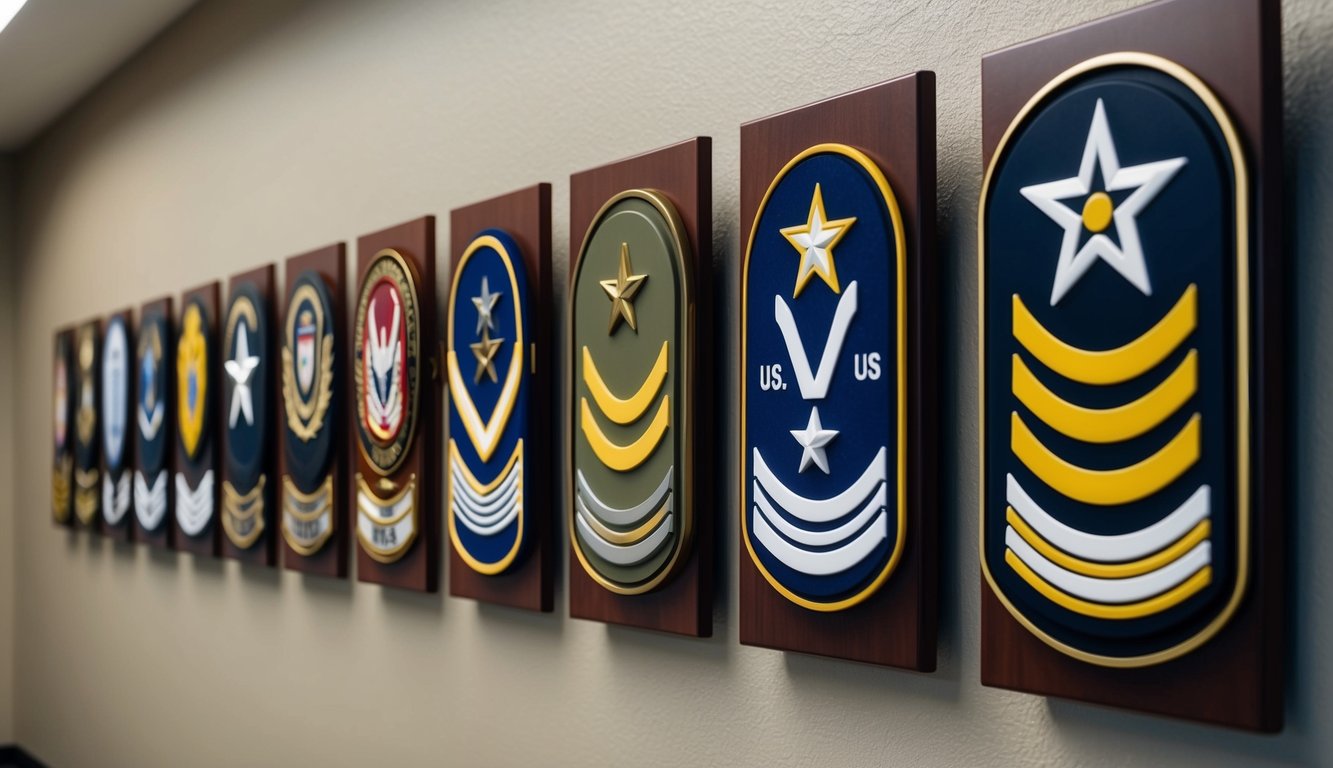
The U.S. Army provides a structured pathway for training and career progression.
You’ll start with essential skills before focusing on your chosen field and enhancing your leadership abilities.
Basic Combat Training
Basic Combat Training (BCT) is your initiation into Army life.
Over ten weeks, you will learn fundamental soldier skills and improve your physical fitness.
The training consists of three phases:
Red Phase: This stage emphasizes Army values, traditions, and basic soldier skills.
Expect early starts, rigorous physical training, and classroom learning.
White Phase: Emphasizing marksmanship and combat skills, you’ll spend time at ranges and acquire field tactics.
Blue Phase: The concluding phase assesses all you’ve learned, challenging you through the confidence course, land navigation exercises, and field training events.
Throughout BCT, drill sergeants will push you to your limits.
You will need to pass the Army Combat Fitness Test while embracing core values such as loyalty and integrity.
Advanced Individual Training
Post-BCT, you will proceed to Advanced Individual Training (AIT), where you’ll acquire the specialized skills for your designated Military Occupational Specialty (MOS).
The duration of AIT differs based on the job, ranging from a few weeks to over a year.
For instance, infantry training might span 14 weeks, while an intelligence analyst could require 16 weeks or more.
Your daily schedule will encompass:
- Job-specific technical training
- Hands-on equipment practice
- Physical fitness activities
- Ongoing military skills development
AIT instructors are experts in their fields, preparing you for real-world scenarios you’ll encounter in your role.
Professional Development Courses
As you climb the ranks, you will participate in various leadership courses designed to prepare you for greater responsibilities and facilitate your career growth.
Noncommissioned officers (NCOs) complete:
- Basic Leader Course
- Advanced Leader Course
- Senior Leader Course
Officers progress through:
- Basic Officer Leader Course
- Captain’s Career Course
- Command and General Staff College
These courses combine classroom learning with practical applications, covering topics like tactical planning, personnel management, and Army doctrine.
The Army also provides unique training opportunities, so you might attend Airborne School, Ranger School, or other advanced courses to enhance your skills and career prospects.
Life in the Army
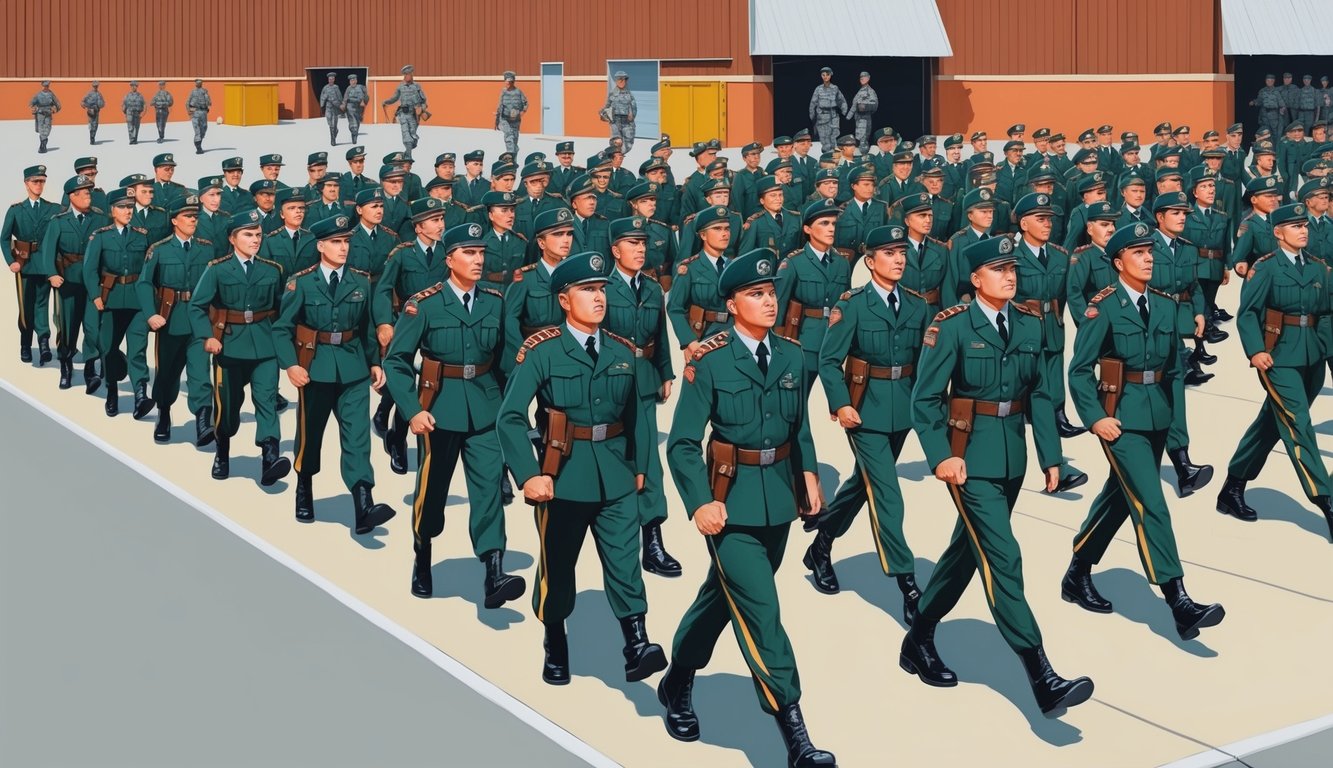
Military service influences every aspect of a soldier’s daily life.
The Army instills discipline, values, and a sense of purpose that extends far beyond combat.
Daily Routines
Your day typically begins around 5:00 AM with physical training, where you engage in exercises such as running, push-ups, and strength drills to maintain optimal fitness levels.
Following PT, you will freshen up, enjoy breakfast, and report for duty.
Your specific tasks will depend on your role, which might include:
• Equipment maintenance
• Tactical training
• Classroom instruction
• Administrative duties
Lunch breaks tend to be brief, enabling you to refuel before afternoon activities.
Evening hours commonly involve additional training, personal time for study or recreation, and preparation for the next day.
While weekends may offer more leisure time, you remain on call.
Even when off-duty, you represent the Army and uphold its standards.
Army Values and Culture
The Army’s core values form the foundation of your military life:
• Loyalty
• Duty
• Respect
• Selfless Service
• Honor
• Integrity
• Personal Courage
These principles guide your actions and decisions, both on and off duty.
You’ll experience a strong emphasis on teamwork and camaraderie among fellow soldiers.
Leadership development is a strong focus.
From the outset, you will have opportunities to lead and take on responsibilities for others, which builds confidence and equips you with invaluable skills applicable in and out of the Army.
This culture underscores resilience and adaptability; facing challenges that push your limits cultivates strength and character.
Comparing Branches
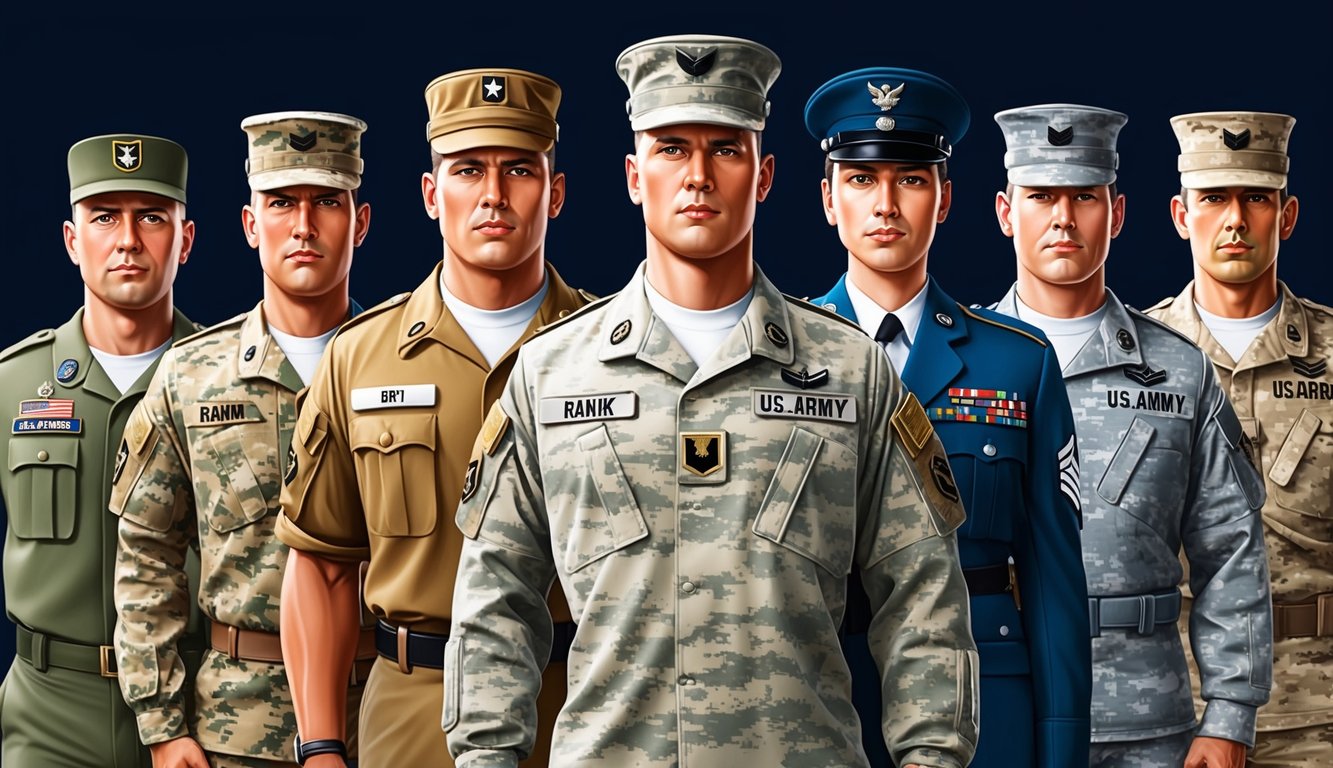
The U.S. military comprises distinct branches, each with specific roles and structures.
While the Army serves as the backbone of ground forces, other branches offer specialized capabilities that support or complement Army operations.
The Army and Air Force
There are both similarities and differences between the Army and Air Force.
The Army focuses on ground combat, whereas the Air Force excels in aerial operations.
Both branches maintain comparable rank structures, with enlisted personnel, warrant officers, and commissioned officers.
In the Army, you could serve as a combat engineer or infantryman, while the Air Force offers roles such as pilots and aerospace engineers.
Generally, the Air Force has a higher concentration of technical roles.
Training varies as well.
Army basic training lasts 10 weeks and emphasizes physical fitness and combat skills, while Air Force basic training is shorter at 8.5 weeks and focuses on military discipline and Air Force culture.
Career advancement differs too; the Army can allow for quicker promotions in certain fields, while the Air Force is noted for better living conditions and work-life balance.
The Army and Marine Corps
While both the Army and Marine Corps prioritize ground combat, their size and mission scopes vary.
As an Army soldier, you are part of a larger force with diverse roles, while Marines constitute a smaller, specialized amphibious force.
Marine Corps training is often deemed more rigorous, lasting 13 weeks compared to the Army’s 10.
Marines pride themselves on being “first to fight,” adhering to higher physical fitness standards.
Job options differ; the Army features a wider assortment of career fields, including a broader range of technical and support positions.
Meanwhile, the Marine Corps has fewer occupational specialties but emphasizes versatility in its roles.
Leadership philosophies diverge as well, with the Army opting for a more decentralized command structure in contrast to the Marine Corps’s centralized model.
The Army and Navy
Significant contrasts exist between Army and Navy operations, as the Army handles land-based missions while the Navy manages naval operations.
This fundamental difference shapes their respective structures and cultures.
Navy ranks differ from those in the Army, especially among enlisted personnel.
A Navy “Seaman” equates to an Army “Private.” Meanwhile, officer ranks share similarities, although titles differ, such as “Ensign” rather than “Second Lieutenant.”
Job specializations range dramatically; Army positions primarily revolve around ground combat and support, whereas Navy roles focus on ship operations, aviation, and underwater activities.
Training methods vary too; Navy boot camp lasts 8 weeks, concentrating on nautical skills alongside fundamental military training.
The Army’s 10-week program stresses land warfare competencies.
The Army and Coast Guard
Though the Coast Guard operates under the Department of Homeland Security, it shares several similarities with the Army.
Both branches have law enforcement responsibilities, albeit with the Coast Guard’s maritime focus.
Coast Guard ranks resemble those of the Navy, contrasting with the Army’s structure.
A Coast Guard “Seaman” correlates with an Army “Private,” and officer ranks utilize naval titles such as “Ensign” and “Lieutenant.”
Job specialties in the Coast Guard center on maritime-related tasks, such as maritime law enforcement specialists or rescue swimmers, roles not typically found in the Army.
Training approaches also differ; Coast Guard boot camp lasts 8 weeks, highlighting water survival skills in conjunction with basic military training, while the Army’s training focuses on land combat tactics.
Frequently Asked Questions
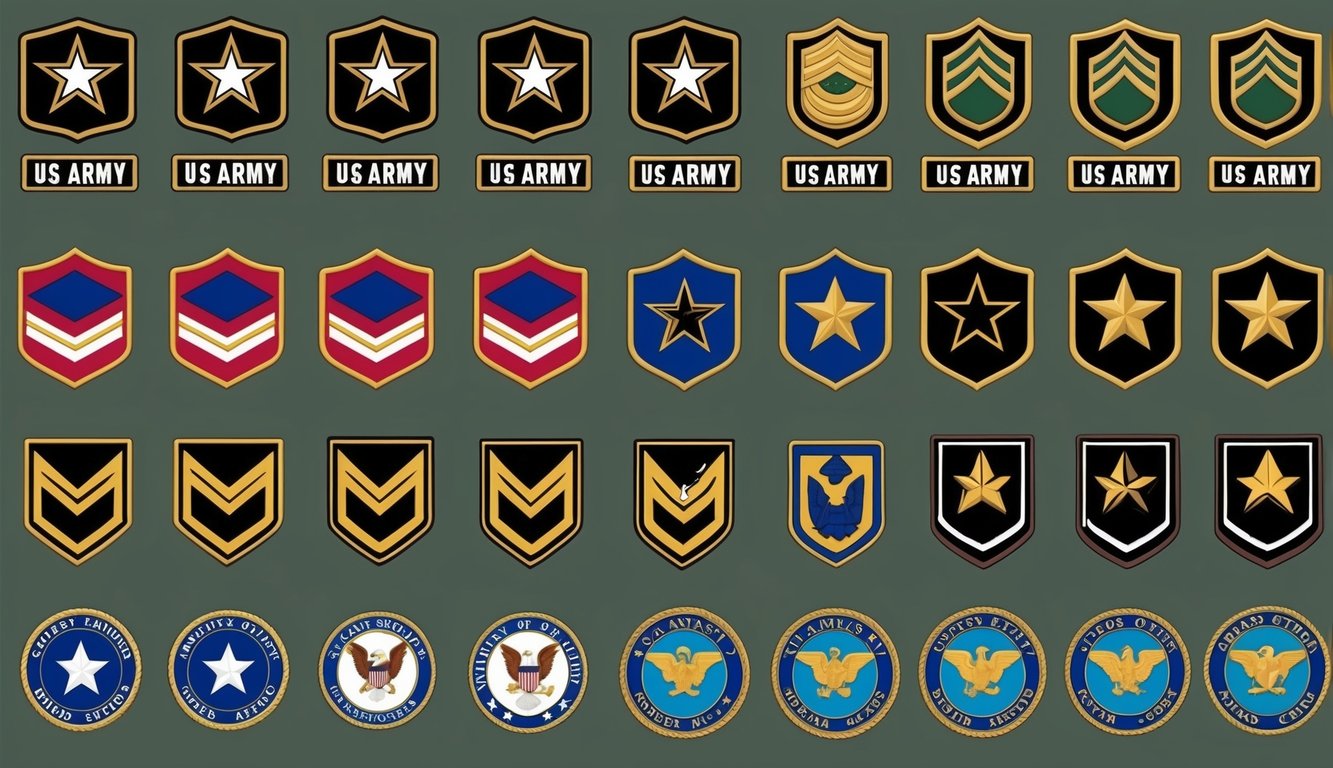
Understanding Army ranks and their progression is crucial for anyone considering military service.
Below are answers to common questions regarding the U.S. Army’s rank structure, pay grades, and career pathways.
What is the rank structure in the U.S. Army starting from the entry level?
The U.S. Army rank structure initiates with Private (E-1) and moves upward through enlisted ranks to Sergeant Major of the Army (E-9).
Above enlisted ranks are Warrant Officers (WO1 to CW5) and Commissioned Officers (2nd Lieutenant to General).
Enlisted ranks are critical to the Army, with escalating responsibilities as one advances.
Non-commissioned officers (NCOs) begin at Sergeant (E-5) and play vital leadership roles.
How is pay grade assigned in the U.S. Army ranks?
Army pay grades align directly with rank, represented by a letter and number combination.
Enlisted personnel range from E-1 to E-9, Warrant Officers from W-1 to W-5, and Commissioned Officers from O-1 to O-10.
Your base salary rises with rank and years of service, with potential additional pay and allowances enhancing overall compensation.
What are the primary distinctions between commissioned officers and enlisted ranks in the Army?
Commissioned officers derive their authority directly from the President of the United States, typically requiring a bachelor’s degree, and oversee mission planning and soldier leadership.
Enlisted members carry out missions and manage everyday operations, potentially rising through ranks to become senior NCOs with considerable leadership and advisory roles.
How high a rank can one typically achieve after 20 years in the Army?
After two decades of service, an enlisted soldier may reach the level of Sergeant First Class (E-7) or Master Sergeant (E-8), while officers might attain a rank of Major (O-4) or Lieutenant Colonel (O-5).
Rank progression depends on personal performance, education, and available opportunities, with some outstanding soldiers gaining higher ranks within this timespan.
Could you clarify how individuals advance through Army ranks?
Promotion in the Army is contingent upon a combination of service duration, time in grade, job performance, and educational qualifications.
Each promotion typically requires meeting specific criteria.
Advancement in lower enlisted ranks is often based on time served, whereas higher ranks necessitate passing promotion boards, demonstrating leadership prowess, and occasionally completing additional training or education.
At which rank do most new enlistees typically begin their Army career?
Most new enlistees start in the Army as Private (E-1), though some may enter at a higher rank, such as Private First Class (E-3), due to college credits, JROTC experience, or specific skills.
Your starting rank can influence initial pay and may expedite career progression, so it’s advisable to discuss eligibility for advanced placement with a recruiter.

